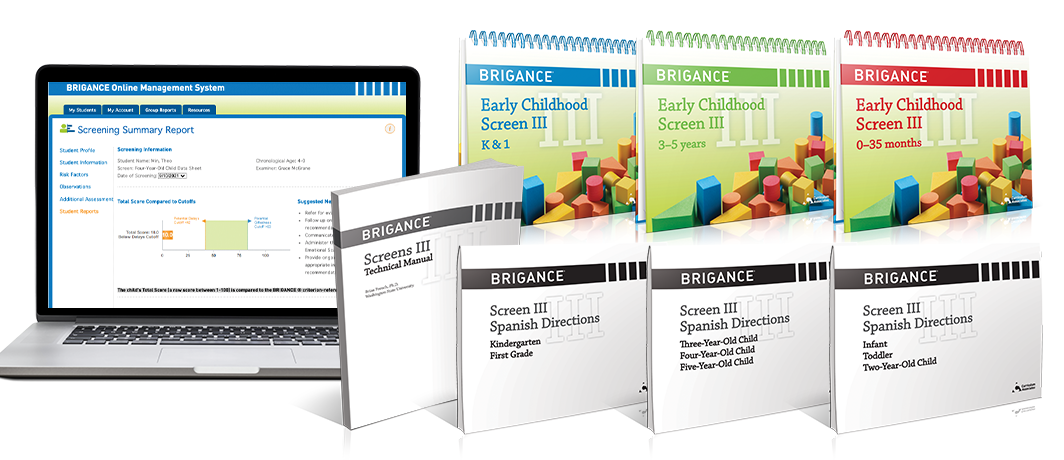Kit for 0–35 Months
- Screens III Manual (Birth–35 Months)
- 60 Assorted Data Sheets (in English only)
- Screens III Technical Manual for scoring information
- Screens III Manipulatives
Screens III Kit (0–35 months) Item Number: 14293

Measure age-appropriate skills that lead to school success.

These early childhood screening resources include three age-specific volumes, allowing educators to quickly assess skills that are critical predictors of school success. Quickly and effectively screen infants, toddlers, and pre-school and kindergarten children to determine age-appropriate skills. Age-specific Data Sheets track early learning skills in the following domains:
Screening takes approximately 10 to 15 minutes per child and allows for comparison of performance to the cutoff scores for delays and giftedness as well as to the performance of same-age children. Head Start and Spanish options are available.
Head Start and Early Head Start are federally funded programs that promote school readiness of children ages birth to 5 from low-income families by supporting their early developmental and academic skills. Kits are available with customized guidance for Early Head Start and Head Start programs with alignment to the Head Start Early Learning Outcomes Framework.
Our Professional Learning suite offers collaborative live sessions and curated, on-demand digital resources to help educators drive meaningful student outcomes with their Curriculum Associates programs.Invest in Your Impact

Screens III Kit (0–35 months) Item Number: 14293
Screens III Kit (3–5 Years) Item Number: 14295
Screens III Kit (K&1) Item Number: 14298
*Please note that the kindergarten and the 5-year-old Core Assessments are identical.
No need to compute a child’s chronological age by hand—the free Rounded Chronological Age Calculator does...
Some programs screen multiple times. The initial screening may take place in the spring or summer prior t...
BRIGANCE Early Childhood development screening tools use observation, interviews, and child performance t...

For a better website experience, please confirm your location.